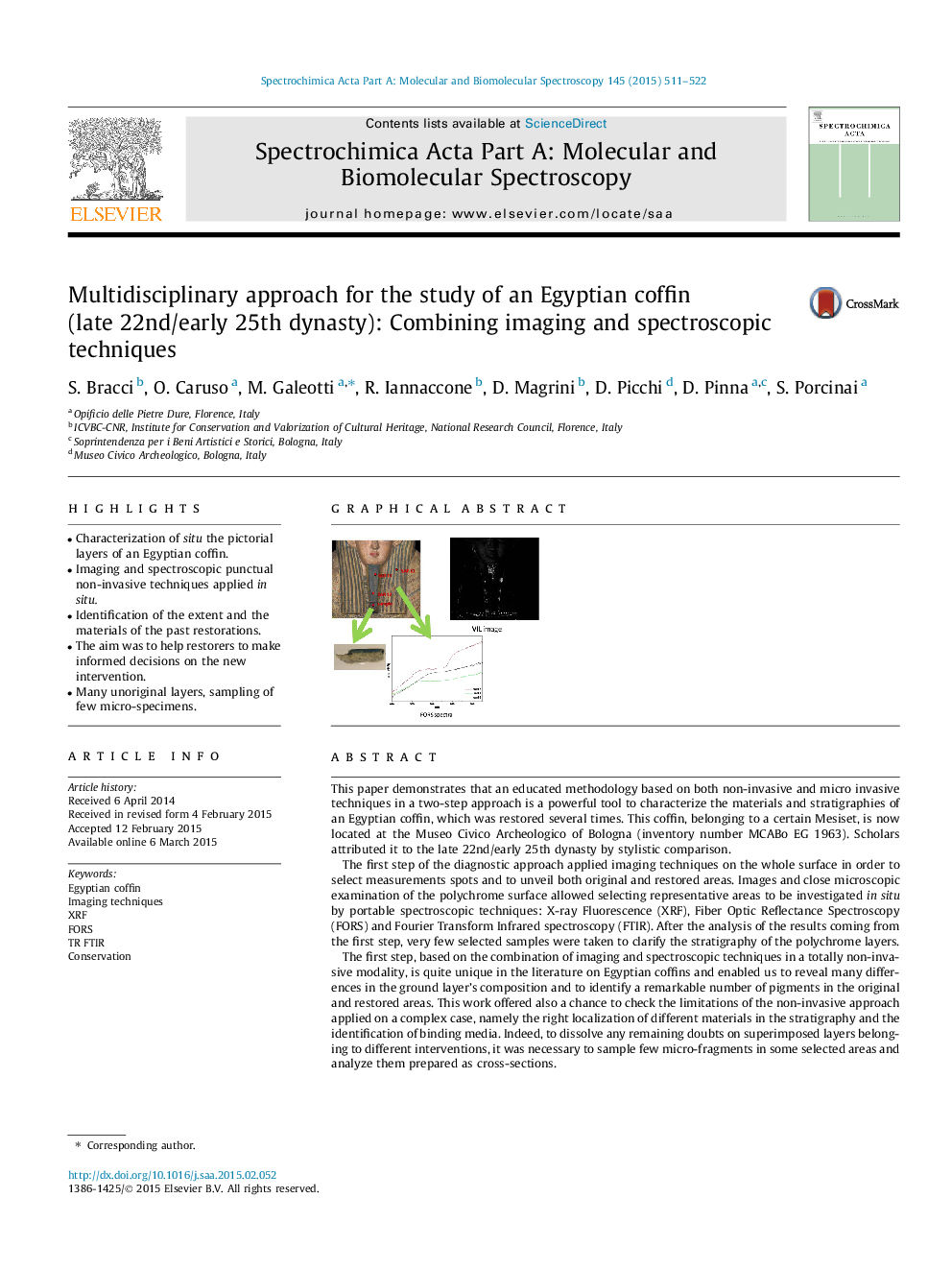| کد مقاله | کد نشریه | سال انتشار | مقاله انگلیسی | نسخه تمام متن |
|---|---|---|---|---|
| 1229014 | 1495224 | 2015 | 12 صفحه PDF | دانلود رایگان |

• Characterization of situ the pictorial layers of an Egyptian coffin.
• Imaging and spectroscopic punctual non-invasive techniques applied in situ.
• Identification of the extent and the materials of the past restorations.
• The aim was to help restorers to make informed decisions on the new intervention.
• Many unoriginal layers, sampling of few micro-specimens.
This paper demonstrates that an educated methodology based on both non-invasive and micro invasive techniques in a two-step approach is a powerful tool to characterize the materials and stratigraphies of an Egyptian coffin, which was restored several times. This coffin, belonging to a certain Mesiset, is now located at the Museo Civico Archeologico of Bologna (inventory number MCABo EG 1963). Scholars attributed it to the late 22nd/early 25th dynasty by stylistic comparison.The first step of the diagnostic approach applied imaging techniques on the whole surface in order to select measurements spots and to unveil both original and restored areas. Images and close microscopic examination of the polychrome surface allowed selecting representative areas to be investigated in situ by portable spectroscopic techniques: X-ray Fluorescence (XRF), Fiber Optic Reflectance Spectroscopy (FORS) and Fourier Transform Infrared spectroscopy (FTIR). After the analysis of the results coming from the first step, very few selected samples were taken to clarify the stratigraphy of the polychrome layers.The first step, based on the combination of imaging and spectroscopic techniques in a totally non-invasive modality, is quite unique in the literature on Egyptian coffins and enabled us to reveal many differences in the ground layer’s composition and to identify a remarkable number of pigments in the original and restored areas. This work offered also a chance to check the limitations of the non-invasive approach applied on a complex case, namely the right localization of different materials in the stratigraphy and the identification of binding media. Indeed, to dissolve any remaining doubts on superimposed layers belonging to different interventions, it was necessary to sample few micro-fragments in some selected areas and analyze them prepared as cross-sections.The original ground layer is made of calcite, while the restored areas show the presence of either a mixture of calcite and silicates or a gypsum ground, overlapped by lead white. The original pigments were identified as orpiment, cinnabar and red clay, Egyptian blue and green copper based pigments. Some other pigments, such as white lead, Naples yellow, cerulean blue and azurite were only found in the restored areas.
Figure optionsDownload as PowerPoint slide
Journal: Spectrochimica Acta Part A: Molecular and Biomolecular Spectroscopy - Volume 145, 15 June 2015, Pages 511–522